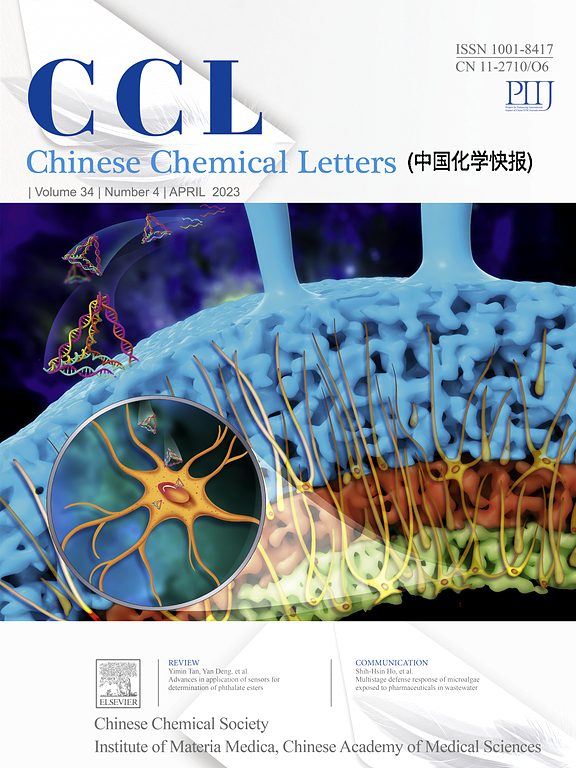金属有机骨架支撑碳量子点作为白色发光荧光粉
IF 9.4
1区 化学
Q1 CHEMISTRY, MULTIDISCIPLINARY
引用次数: 0
摘要
荧光粉中稀土元素的环境问题日益严重,加上生产成本高,增加了对可持续替代品的需求。我们提出了一种有前途的解决方案,使用具有大表面积和可调孔结构的发光金属有机框架(LMOFs)与有机碳量子点(CQDs)相结合。本研究将黄色荧光量子点(CQDs-Y)与蓝色荧光lof (ZJU-28)结合,形成复合材料CQDs-Y-n@ZJU-28,开发了一种新型的白光二极管(WLED)荧光粉。该复合材料具有优异的热稳定性和化学稳定性,具有长期存储性能,在365 nm激发下可发出暖白光(CIE: 0.3277, 0.3281),外量子效率(EQE)为8.85 %。此外,它具有可调的发射特性和有前途的LED性能,显示显色指数(CRI)为78,相关色温为3384 K。在277-437 K的温度范围内,发射的光在光谱的白色端经历最小的颜色偏差,使其成为先进WLED应用的理想候选者。本文章由计算机程序翻译,如有差异,请以英文原文为准。

Metal-organic framework supported carbon quantum dots as white light-emitting phosphor
The growing environmental concerns regarding rare earth elements in fluorescent powders, along with high production costs, have increased the demand for sustainable alternatives. We propose a promising solution using luminescent metal-organic frameworks (LMOFs) with large surface areas and tunable pore structures, combined with organic carbon quantum dots (CQDs). This study develops a novel white light-emitting diode (WLED) fluorescent powder by incorporating yellow-fluorescent quantum dots (CQDs-Y) into blue-emitting LMOF (ZJU-28), forming the composite material CQDs-Y-n@ZJU-28. The composite exhibits excellent thermal and chemical stability, long-term storage performance, and emits warm white light (CIE: 0.3277, 0.3281) when subjected to excitation at 365 nm, along with an external quantum efficiency (EQE) of 8.85 %. Furthermore, it exhibits tunable emission characteristics and promising LED performance, showcasing a color rendering index (CRI) of 78 and a correlated color temperature of 3384 K. The emitted light undergoes minimal deviation in color towards the white end of the spectrum in the temperature range of 277–437 K, making it an ideal candidate for advanced WLED applications.
求助全文
通过发布文献求助,成功后即可免费获取论文全文。
去求助
来源期刊

Chinese Chemical Letters
化学-化学综合
CiteScore
14.10
自引率
15.40%
发文量
8969
审稿时长
1.6 months
期刊介绍:
Chinese Chemical Letters (CCL) (ISSN 1001-8417) was founded in July 1990. The journal publishes preliminary accounts in the whole field of chemistry, including inorganic chemistry, organic chemistry, analytical chemistry, physical chemistry, polymer chemistry, applied chemistry, etc.Chinese Chemical Letters does not accept articles previously published or scheduled to be published. To verify originality, your article may be checked by the originality detection service CrossCheck.
 求助内容:
求助内容: 应助结果提醒方式:
应助结果提醒方式:


